Inside Five Deeps’ record-setting quest to reach the bottom of each ocean
Adventurer Victor Vescovo hopes to change the landscape of exploration with his deep-sea submersible.
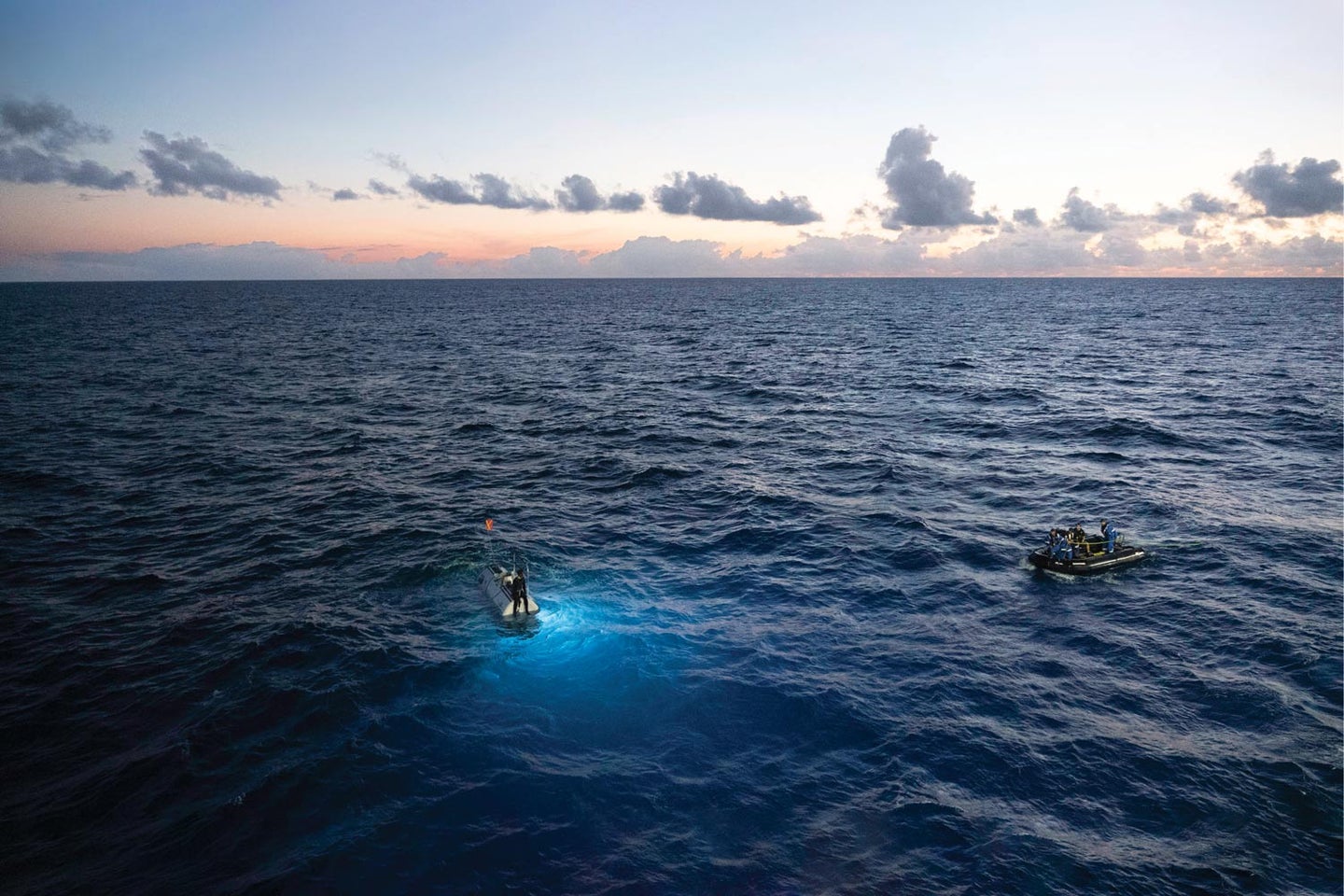
Since December 2018, Popular Science has followed extreme adventurer Victor Vescovo around the globe as he worked to be the first human to touch the deepest point in all five oceans. In chronicling his quest, dubbed The Five Deeps, we uncover the technologies, discoveries, and controversies that come with diving to into this largely unexplored world beneath the surface.
After Victor Vescovo climbed the Seven Summits—the highest mountain on each continent—he skied to both the North and South poles. Only 66 people have accomplished this dual feat of human performance, dubbed the Explorers’ Grand Slam. When Vescovo finished, in 2017, he certainly could have hung up his gear and felt pretty good about his place in the annals of adventure. But the 53-year-old private equity investor from Texas was not done.
Vescovo had been considering what, after Everest and Antarctica, he could possibly tackle that would feel big enough. Outer space wasn’t really an option yet. Then he came up with the perfect quest. It would be, in a sense, the inverse of the Seven Summits. He called it the Five Deeps.
No human has ever reached the bottommost point of all five oceans, or even tried. And only one person—film director and ocean fanboy James Cameron—had touched the absolute nadir, Challenger Deep in the western Pacific’s Mariana Trench, since Lt. Don Walsh and Jacques Piccard first reached the spot way back on January 23, 1960.
That’s how, in December 2018, Vescovo found himself off Puerto Rico aboard Pressure Drop, a repurposed U.S. Navy ship, preparing to take Limiting Factor, the deep-diving submersible he’d commissioned, to the floor of the Atlantic Ocean, 8,376 meters down. (Meters are standard in the nautical world; that’s 27,480 feet, or just over 5 miles.)
Limiting Factor is the unique creation of Triton Submarines, and the company’s president, Patrick Lahey, wasn’t thrilled that this unicorn of a customer—the rich guy who called up and ordered a full-ocean-depth sub—was determined to go it alone. Lahey urged Vescovo to dive with a copilot. But this was always a nonstarter.
Vescovo flies planes and helicopters, and he was determined to fly this craft too. “I told Patrick from the very beginning: ‘I want to take a submarine to the bottom of all five oceans by myself,’” Vescovo explained. As an introvert, he prefers being alone. Also, he said, “when you do something solo, it is materially different. And it’s more rewarding.”
Vescovo has a calm, almost Zen way about him. The Dallas native wears his graying blond hair long, and speaks softly, even when excited. But he seemed especially relaxed at the pre-dive meeting that December morning. He accepted a folded and bagged flag from the Explorers Club, a society of adventurers focused on promoting field study. The banner would go with him to the bottom of the Atlantic and then, if all went well, to the next four deeps, before returning to the club’s headquarters in New York City.
Overall, though, the mood in the room was tense. It was the sixth and final day they would be able to dive in the Puerto Rico Trench before Vescovo had to get back to business in Texas. Twice, he had gone for trial runs and aborted. Once, the hatch leaked. Then, the sub’s lone mechanical arm, which would pick up objects of scientific interest from the seafloor, fell off. Water had also shorted a circuit, causing a malfunction in the variable ballast system, which allows the pilot to dump small amounts of weight during a dive. “It’s just entropy that can happen when you’re dealing with complex systems,” Vescovo said. Satellites take shape in clean rooms to minimize this effect; Limiting Factor was built in a 10,000-square-foot industrial space in Vero Beach, Florida.

Small but Mighty
Just 48 hours before this meeting, it had seemed likely the Puerto Rico dive would get scrapped and rescheduled, throwing the plan to do all five deeps in a year into chaos. But the issues turned out to be fixable, and Triton’s onboard team—the same engineers and technicians who built the sub—had toiled furiously for 36 hours to get it ready.
Vescovo assured the room that he was comfortable. Limiting Factor might be missing its mechanical arm, and the ballast system wasn’t working as precisely as he’d like, but the core features—its ability to go to the bottom and come back, its life-support functions—were all A-OK. “I feel that the vessel is safe enough to try,” he said. “It’s a calculated risk, but I’ve taken greater risks. So this is…reasonable.”
“…he says, before descending to eight and a half thousand meters,” joked Rob McCallum, the Five Deeps expedition leader. More than anyone on board, McCallum understood the magnitude of the ambition, and just how much the team had accomplished to get to this point. He is a rare specialist in deep-sea submersible operations; he led the test program for James Cameron’s expedition to Challenger Deep, as well as multiple visits to the Titanic and Bismarck wrecks using Russia’s Mir subs. Since those Mirs were withdrawn from service after 2005, there hasn’t been any commercially available craft on the planet that could reach Titanic, which lies near 3,800 meters. If all went well here, Limiting Factor would prove to have that ability, and a whole lot more.
“We have all been working very long and hard to get to this point,” McCallum said. “Conditions are perfect. The boys are very confident in the sub. I don’t want anyone to stress. The plan is pretty simple.” Straight down, then straight back up.
After lunch, Vescovo was on his way, plunging through the depths. The ride down took about three hours, and he poked around on the floor for an hour, just to see how the sub managed at such extreme depths. Surfacing was slightly quicker, about two hours.
While Vescovo was underwater, people in Pressure Drop‘s cramped control room monitored their screens and waited for scheduled voice checks, which became noisier and harder to make out after Limiting Factor passed 6,000 meters. This made Lahey even more nervous, but his chief electrical engineer had anticipated the issue and assured him that Vescovo was fine.
Finally, around sunset, Limiting Factor popped to the surface and bobbed, awaiting recovery. McCallum zipped over in an inflatable Zodiac boat to drop off Triton’s rescue diver, who swam to the sub and attached a tether connecting it to Pressure Drop. Then he opened the hatch so Vescovo could climb out and breathe the fresh air. He pumped a fist and yelled: “One down!”
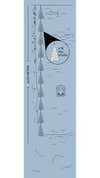
Dive 1: Atlantic Ocean
* The Burj Khalifa is the world’s tallest building, at 829.8 meters.
When Victor Vescovo went looking for someone to build a sub that could repeatedly carry him to the bottom of the sea, he didn’t have a lot of options. If you eliminate defense contractors that build military vessels, there are only a handful of companies that service the private sector. And that market is almost entirely for vehicles that go down a few hundred feet to let tourists gawk at sharks and rays.
Vescovo settled on Triton, a Florida-based manufacturer that claimed on its website to be developing a commercially rated, full-ocean-depth sub. This wasn’t exactly right. The company was working on such a vessel in the sense that Lahey wanted to make one. He just didn’t have the cash. “I’d wanted to build one for more than a decade,” Lahey explained. “I didn’t have the financial capability, and I didn’t have a client willing to fund it.”
Then, in 2015, that client called.
Lahey told Vescovo that he could produce the vessel in about two years, which seemed optimistic. There was no commercial submersible in existence capable of reaching the deeps, which range from 6,000 to nearly 11,000 meters. There were very few, in fact, that could survive the ocean’s average depth of 3,688 meters. And only four—all of them government-owned and unavailable for private use—were able to manage more than 6,000 meters. The newest and most capable of the bunch, China’s Jiaolong, hadn’t gone below 7,062.
Lahey and his chief designer, an Englishman named John Ramsay, were certain they could do it, especially since the sub was so simple: It needed only two seats. That allowed Ramsay to make the design compact, just 15 feet long, 6.2 feet wide, and 12 feet high, about the size of two stacked minivans. Keeping a sub small lowers costs and, more important, weight. You have to make up for every pound you add with buoyancy, and whatever provides that lift (air, gas, foam) takes up space. That doesn’t matter for giant military craft that carry wee nuclear power plants and rarely go deeper than 500 meters. But it matters a lot for submersibles, a class of vessel toted on surface ships and lifted into and out of the water by deck cranes.
At first, Vescovo saw plenty of things he could do without. He didn’t even want viewports to see through. He wasn’t crazy about the idea of a manipulator arm either. More stuff meant more opportunities for delays—and failure. But he hoped to sell the sub after the Five Deeps, and Lahey explained that there wasn’t much resale value in a vessel with no windows or research capability. As Vescovo studied the slight history of deep-sea exploration, and spoke with ocean scientists, he also realized that he wanted his mission to have purpose. It was an adventure, but it could and should also leave a scientific legacy.
Limiting Factor, which Vescovo named for a vessel in a series of science-fiction novels by Iain M. Banks, does not look like the torpedo-shaped submarines you’re used to seeing. Those have contours that let them primarily cut forward in the water—not straight down and back up. Ramsay says that when he looked around for inspiration, he noticed that “there aren’t many things in the world that are expected to go the same speed both ways.” Really, all he could find were bullet trains and American footballs. Both have an elliptical profile. He worked from there, ultimately creating something that looks like a huge pillow standing on its side.

Exploring the Deeps
Limiting Factor‘s core is a titanium sphere flanked by specialized foam cladding. To test the strength of this 3.5-inch-thick hull—to make sure it would not implode at depth and kill Lahey’s golden ticket—Triton sent it to Russia’s Krylov Institute, which has the only full-ocean-depth pressure chamber on Earth large enough to fit it. “It was kind of scraping down the sides as you lowered it in,” Ramsay said. Krylov squeezed the submersible at nearly 1,400 atmospheres, pressure equivalent to more than 20,000 pounds per square inch.
Electronics were another key concern for the battery-operated craft, since a malfunction could result in a disastrous fire. To minimize the number of holes in the hull, electrical engineer Tom Blades set most of the circuitry outside the vessel. (Doing so also helped keep the craft small.) Only a few mission-critical controls, such as the ballast dropped to start the sub’s ascent, are hard-wired to a switch through small openings in its shell.
Putting electronics on the exterior, though, required each piece to have vast pressure tolerances: They had to work whether at sea level or 11,000 meters. Microchips, which manufacturers test for specifications such as temperature, aren’t pressure-rated. And there was no such thing as a full-ocean-depth battery. “You have to design everything to operate in 1 atmosphere and 1,100,” Vescovo explained. “Imagine carrying a pound, and now imagine carrying 1,100 pounds. Engineering-wise, it’s kind of what you’re doing.”
Triton collaborated with specialty suppliers to modify existing parts and run intensive checks. “It is very much a research and development project with a lot of testing still going on in the field,” Blades said.
To avoid regulatory headaches, Triton worked closely with Jonathan Struwe, an engineer from Norway’s DNV-GL, one of only a few companies that certifies submersibles. Without its clearance, Limiting Factor couldn’t get insurance or dive commercially. Struwe now calls the vessel “the best-tested submersible in the world. Any single component has been tested to a much higher pressure than the sub would ever see.”
By August 2018—after 26 months and about $30 million—Triton was ready for ocean testing, and Vescovo took his first dives, to nearly 5,000 meters. He urged Lahey not to rush things if it meant sacrificing safety, but by fall, everyone seemed confident enough in the vessel to go forward. “A small team of really dedicated engineers working 24/7 can accomplish extraordinary things,” Vescovo said.

Exploring the Deeps
Meanwhile, he needed a ship to tote the submersible around the globe. Following the advice of expedition leader Rob McCallum and skipper Stuart Buckle—who had captained James Cameron’s support ship on the Challenger Deep expedition—Vescovo bought and refit a retired Navy sub-hunting vessel (originally, USNS Indomitable) to serve as a roving base. They added a crane to raise and lower Limiting Factor, equipped wet and dry labs for the science, and updated the onboard control room for sonar and other electronics (plus some comfort upgrades for the crew). Vescovo named the 224-foot-long ship Pressure Drop, another Banks-inspired moniker.
With both craft secured, the team turned to the most complicated parts of the process: sub launch and recovery. Fred McLaren, a retired U.S. Navy submarine captain who was part of the mission teams that went to Titanic and Bismarck, remembers surface activity as the worst part. Unless the ocean is completely calm, which it rarely is, the process of getting a submersible under the water can be white-knuckle. On the Mir, McLaren said, “even a little sea state felt like going over Niagara Falls in a barrel.”
For the Puerto Rico dives, this process was very much a work in progress. Weight limitations on Pressure Drop‘s crane meant the team had to lower Limiting Factor into the water without Vescovo inside. He traveled out to the sub in a Zodiac and then—with the assistance of a diver straddling the top of the bucking craft, as if riding a bronco—climbed into the hatch.
“It’s the riskiest part of the operation,” Vescovo said. As one scientist said after a particularly hairy recovery, “I feel like I’m watching a rescue every time.”
A few afternoons before Vescovo’s first official dive in the Caribbean, as camera operators captured every conceivable angle for a five-part Discovery Channel series that will document the quest, Vescovo, chief scientist Alan Jamieson, and Paul Henry Nargeolet, a retired French navy submersible pilot, sat at a table in Pressure Drop‘s control room. On the wall in front of them, a large flat-screen displayed a 3D map of the Puerto Rico Trench.
The area is a subduction zone, a geologic spot where two tectonic plates collide. Humankind discovered it in 1876, when Great Britain’s HMS Challenger measured a depth of more than 7,000 meters by lowering a hemp line until it went slack. In 1939, the USS Milwaukee identified the deepest part, on the west end—which is why that place is called the Milwaukee Deep. But more-modern bathymetry (nautical speak for depth finding) from surveys done by remote operating vehicles has rewritten that history—a bit. According to Jamieson, their science team identified a slightly lower point, just east of the area.
No human had been in the trench since the French submersible Archimede dived it in 1964. The crew reached 7,300 meters by accident. The story goes that they weren’t looking for the deepest point; they’d wanted to study escarpments, where the terrain juts steeply upward, at the trench’s edge, and missed their landing spot.
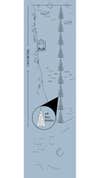
Dive 2: Southern Ocean
Jamieson, a Scotsman who’s based at England’s Newcastle University, zoomed in on the map and pointed out what a mission geologist suspected was the actual deepest point: 8,376 meters. Over the next day or two, Pressure Drop would cruise slowly over the area, using sonar to scan the seafloor to verify its absolute bottom.
Mapping is a major component of the Five Deeps’ science mission. While some trenches, such as the Mariana, are fairly well-charted, others, including the South Ocean’s South Sandwich Trench, are practically black holes. Pressure Drop‘s multibeam echo-sounding sonar—the most sophisticated ever installed on a civilian vessel—would produce detailed maps that are accurate to within just 2 meters, and should advance the knowledge of even the better-known deeps. The crew will make the data public and hand it over to an international organization of expert ocean cartographers known as GEBCO (General Bathymetric Chart of the Oceans). “We are generating a baseline of data on all five of the world’s major trenches, plus some other ones,” Vescovo explained. “You can just imagine that the data could be used for hundreds of years for seismology or cartography.”
Jamieson specializes in these so-called hadal zones of the trenches—named, yes, for Hades. For the past two decades, he’s been making special seafloor landers and joining expeditions to deploy the portable science platforms in depths up to nearly 11,000 meters, where they take photos and video and collect marine life samples via onboard traps. So far, his teams have discovered “a super-giant arthropod,” filmed the deepest-dwelling fish ever spotted in the Mariana Trench, and amassed the world’s largest collection of hadal wildlife.
For Five Deeps, Jamieson worked with Triton to design three different aluminum-framed landers that could work both alone and in conjunction with Limiting Factor. The landers, which use the same specialized foam as the sub for buoyancy, would serve as navigation beacons for the craft on the seafloor, as well as supplementary science platforms. Vescovo could use Limiting Factor‘s arm, for example, to grab rocks and biological samples, and deposit them in boxes on the landers.
Jamieson was arguably the busiest man on the boat. He had to be up before dawn every day to prep the landers for their trips to the bottom, and then on duty after dark when they surfaced. In between, he worked with his team to label and store samples, and study the latest sonar data.
In Pressure Drop‘s control room, he pointed out another area of interest on the map, this one to the east of where Vescovo would dive. For eight years starting in 1973, the U.S. government designated a 193-square-mile area of the trench (about the size of Tulsa, Oklahoma) for dumping pharmaceutical waste. “The thinking was, ‘Deep water, who cares?'” he said.
Bureaucrats didn’t consider that these extreme deeps had endemic fauna, or that such waste was toxic to marine crustaceans. Even worse, Jamieson explained, what falls into a trench has nowhere to go. Plates in subduction zones shift slowly, on the order of 2 centimeters a year. So, for eons, gunk just sits there, poisoning life. Eventually, over the course of millions of years, Earth’s mantle will absorb the icky stuff.

Dive 3: Indian Ocean
In other trenches, Jamieson has found microscopic fragments of plastic in the bodies of animals, including colorful threads clearly visible under a microscope. In 2018, a study in the Mariana Trench found that concentrations of PCBs—flame-retardant chemicals that entered commercial use in the 1930s and were banned by the 1970s—were 50 times higher than you would find in one of China’s most polluted rivers.
Here, however, Jamieson hoped to spy evidence of a more positive development. Sea grasses, which gobble carbon, fill these Caribbean waters. When hurricanes tear up that flora, much of it then falls to the bottom, and the decomposing organic matter feeds the tiny organisms that live there. “It’s a really nice story,” he said. Carbon goes from the atmosphere and into a subduction zone. “It ends up in the sediment, and gets pushed into Earth’s mantle,” he said. “So the very deepest places in the world are actually getting rid of carbon.”
Jamieson was optimistic about critter discoveries too. For the past decade, he and his colleagues had been pursuing varieties of deep-sea snailfish—small, fragile pale swimmers with tiny black eyes. They found the creatures in a trench near Japan, near the bottom of Challenger Deep, and off New Zealand. Earlier in 2018, he spied some living in the Atacama Trench, off Chile. “They’re not the same species,” he said, with some incredulity. “They’re genetically not really related. But they’re at the same depth, and look similar.” This suggests that these distinct populations, all isolated, have evolved similar anatomy.
Creatures of the ocean deeps include some of the oldest and best-preserved fauna on the planet. One of Jamieson’s landers had caught on camera a chimera—from a family of fish that evolved around 280 million years ago—tussling with a shark.
One of the biggest mysteries about these places relates to the depth range of fish. No one has ever seen any below 8,200 meters. So, what’s up with the last 3,000? The explanation, Jamieson thinks, is that fish are biochemically constrained from passing below that point. Paul Yancey, a Whitman College biologist who would join a future Five Deeps dive, has proposed that the answer lies in osmolytes, compounds that protect the proteins inside animal cells from damage caused by extreme pressure. Yancey discovered that the concentration of an osmolyte known as TMAO in fish cells increases with depth. Since 2011, Jamieson and Yancey have biopsied dozens of fish species and plotted their osmolytes. At 8,200 meters, the cells were saturated. No way to add more TMAO.
Vescovo lit up at this story. “It’s the inverse of the death zone,” he said, referring to the altitude at which the human body can no longer acclimatize to a drop in oxygen levels. Generally, it’s around 8,000 meters up.
Jamieson has a theory about this underwater line: He speculates that it was once the full-ocean depth. Most of the world’s trenches are within a few hundred meters of 8,000, and they’re all flat. But the deepest points—those few 9,750-plus-meter drops—are not flat at all. They’re pits, created, he thinks, when seafloor plates split.
Perhaps numerous animals evolved to exist down to 8,200 meters, but only some went deeper after those rifts occurred. Given time, or environmental necessity—say, rapidly warming seas—maybe fish will evolve the ability to get there too.

Chill Factors
When Vescovo passed 8,200 meters in the Puerto Rico Trench on December 20, 2018, Limiting Factor officially became the deepest-diving operational submersible on the planet. Two months later, Vescovo became the first person ever to dive the Southern Ocean’s South Sandwich Trench, which sits in the nether region between Argentina and Antarctica. “We know more about Mars than we know about the South Sandwich Trench,” he said.
That leg required a full month aboard Pressure Drop. And the weather, cold and blustery, was a concern the whole way. The crew had to pick up an ice pilot to navigate the ship around icebergs. But luck broke the right way. On the day of the dive, the conditions were perfect: clear weather, calm ocean.
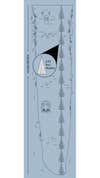
Dive 4: Pacific Ocean
The attempt itself was not. Around 4,500 meters, a little more than halfway down, Vescovo lost communications with the surface; this time, it was an effect of the frigid water. The crew could hear Vescovo, but he couldn’t hear them. “I decided to keep going down because we’d come that far and I had a good shot,” he said.
Their mission fully mapped the South Sandwich Trench in high resolution for the first time. And that data showed Meteor Deep, previously labeled the bottommost point, actually wasn’t in the right place. The real nadir was some 30 kilometers away. Other cartographic discoveries included a second depression, and massive underwater mountains nearly 1,500 meters high, as lofty at Mount Pinatubo. (Vescovo and the mission crew will get to name them.)
From there, Pressure Drop headed to the other side of the planet, passing around South Africa’s Cape Horn. In early April, Vescovo dived the Java Trench, touching down 7,192 meters under the Indian Ocean—another first. Then Lahey did a research dive so chief scientist Jamieson could finally descend into his area of specialty, the hadal zone, for the first time in his career.
There, Limiting Factor‘s cameras caught a new species of snailfish, and, in Jamieson’s words, “an extraordinary gelatinous animal.” He thinks it’s something called a stalked ascidian, or sea squirt, and you can see it for yourself on YouTube.
Jamieson often chafes at how the public reacts to discoveries like this. Animals of the deep, he says, “are only ever wheeled out as a Victorian freak show. The Pacific’s half the planet, but as soon you show an animal from down below, it’s like: ‘It’s weird! It’s alien!’ It’s not alien. They cover more of the planet than humans do. If anyone’s the alien, it’s the human.”
Creatures that live in hadal zones, in total darkness and at almost unfathomable pressure, fill a vital role in our earthly ecosystem. Jamieson offers the example of holothurians, commonly known as sea cucumbers, as a species that does more for Earth than rhinos or giraffes or lions. “There are billions of them all around the planet, constantly irrigating the seafloor, keeping it oxygenated.” But they don’t look good in a zoo.
We probably react the way we do because it’s all so unfamiliar. Operating in the deep is a big investment, and traditionally the military has been disinterested in the depths. Fear is a factor too, albeit an irrational one, if you ask expedition leader McCallum. “When we look at space, we don’t think of the danger,” he said. “But when we look into the ocean, we immediately think about the risk of drowning. They both have dangers that have to be managed. I think diving is probably safer.”
McCallum believes we’re entering a new era of exploration in the deep. He says another company is developing a second full-ocean-depth sub, though any specifics, including the firm’s name, are still secret. In the meantime, he’s already heard from individuals who are interested in purchasing Limiting Factor. He also thinks there’s an immediate market for a touring company to offer rides down to Challenger Deep: “I imagine there are people in the world who might spend a million dollars to be among the first 10 people to do that.”

Under Construction
On May 13, 2019, the team made its biggest announcement yet. On his first dive in the Mariana Trench—the fourth of his five deeps—Vescovo set a new record. He reached 10,928 meters: at least 12 meters beyond Don Walsh and Jacques Piccard’s original achievement in 1960. (Despite fanfare, James Cameron’s dive was slightly shallower.)
Vescovo spent four hours puttering around down there, searching for sea anemones and other life. That too was a record: the longest any human has spent in the trench. (The sub can go about 16 hours before it plugs in for a recharge.) He returned a few days later, because no one ever had; Limiting Factor made four dives in the area over eight days.
And there was a special guest on board Pressure Drop to witness it all: Don Walsh. Now 87, he’s been wondering for most of his adult life why everyone was ignoring these swaths of deep ocean. Walsh was thrilled to be there while a human descended to Challenger Deep in a vehicle that wasn’t a one-off. “This was a demonstration of system reliability and operational efficiency never seen before in exploration of the oceans’ deepest places,” he said.
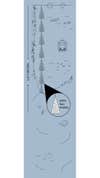
Dive 5: Arctic Ocean
On Vescovo’s first Challenger dive, all three of the seafloor landers malfunctioned and came back up before he reached the bottom. On the second dive, one of them got stuck in the muck, and when expedition leader McCallum heard Lahey fretting over the idea of writing off the $250,000 cost, McCallum pointed out something: “You know you have a full-ocean-depth submersible on board?”
Lahey cleared the idea with Vescovo, then took Limiting Factor back to the bottom himself to perform the deepest underwater salvage in history. He brought certifier DNV-GL’s Jonathan Struwe with him, and upon returning to the surface (with the lander!), Struwe approved the vessel for “unlimited diving depth.” Yet another first.
Just three days after returning from the Pacific, Vescovo and Lahey flew to New York City to announce the new record dives at the Explorers Club. On a rainy Monday night, the two men sat at the front of a grand, wood-paneled salon as Ted Janulis, from the club’s board of directors, introduced their mission to members and media. Janulis pointed out some of the more notable flags framed on the walls, including the ones that flew on Apollo missions, and explained that Flag No. 81—the one they gave to Vescovo—would also return here when he finished all five deeps. Janulis also noted that when people enter the club, they pass a plaque marking the five famous firsts: North Pole, South Pole, Mount Everest, the moon, and Challenger Deep.
That last spot hadn’t seen a human since James Cameron went in 2012. Now, in a single week, Vescovo and his crew had more than doubled the number of visits to the nadir of our oceans, and they’d done it in a submersible that’s able to go back, anytime. “This is a new saga to the story,” Janulis told the audience, one that “extends, celebrates, and furthers deep-sea exploration in a remarkable way. This is about as great as it gets.”
Vescovo was characteristically nonchalant throughout the presentation. He said landing in Challenger Deep was a little like reaching the summit of Everest. At first, he was just relieved. “You think, Oh, thank god. Now I can stop worrying. Then you get that sense of, Wow, this is historic. Then, it’s like: OK, now I can explore. I’m on the bottom of the Mariana Trench, alone, in a submarine. How cool is that?”
James Cameron had told him to expect a “lifeless moonscape,” and while the topography fit that description, Vescovo did see things crawling around on the floor, including what Jamieson and his research team think is a new species of amphipod (a shrimplike crustacean). He also saw clear evidence of human waste: a piece of trash half-covered in silt. And, to the shock of the ship’s scientists, Vescovo experienced current near the trench’s edge, though he has no data to prove it. “They told me that’s impossible,” he said, “but I’m telling you, I was there and there was current.”
Vescovo can’t shake the thought of just how much of the ocean is down there, still unexplored. He was the first person to reach three of four deeps, and only the fourth to reach Challenger. In each of the dives, he had at most a few hours to cruise around. Imagine how much he missed—how much we’re all missing—in the parts of the sea that we haven’t touched.
But Vescovo’s adventure wasn’t done yet. First, he’d fly back to the southwest Pacific to dive the Tonga Trench. After that, Pressure Drop will transit the Panama Canal and return to the Puerto Rico Trench so Jamieson can look for his snailfish. Then Lahey plans to take two prospective buyers out for test dives in the submersible.
By the time the Five Deeps mission wraps in September 2019, after an attempt to reach the Arctic Ocean’s estimated 5,639-meter Molloy Deep, the sub will have made some 40 dives. Lahey and Vescovo want to see it go to someone who will blow away that number. “It’s built for thousands of dives over decades,” Lahey says. Vescovo had started to think of Limiting Factor as a whole new category of vehicle. Up until now, the deep sea has been “this big impenetrable mystery,” he says. “We feel like we have just created, validated, and opened a powerful door to discover and visit any place, any time, in the ocean—which is 90 percent unexplored.”
And what about him? “My real dream would be to orbit,” Vescovo says. NASA plans to start shuttling civilians to the ISS, but he’s also keeping an eye on SpaceX because he thinks Elon Musk might begin offering flights within the next decade. “I’m half-tempted to tweet to Elon saying, ‘I’ll give you a ride in mine if you give me a ride in yours.’”
This story originally published in the Out There issue of Popular Science.